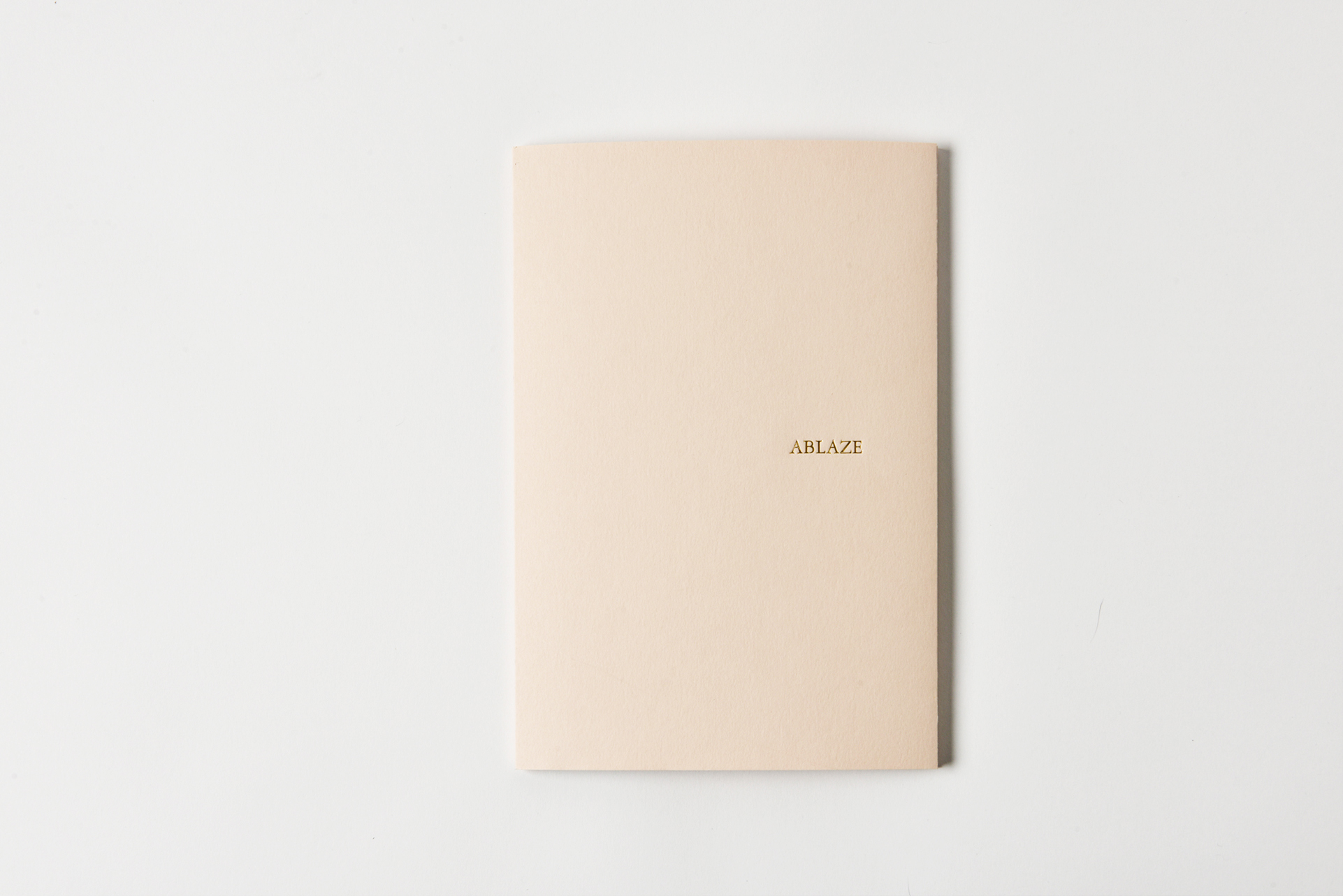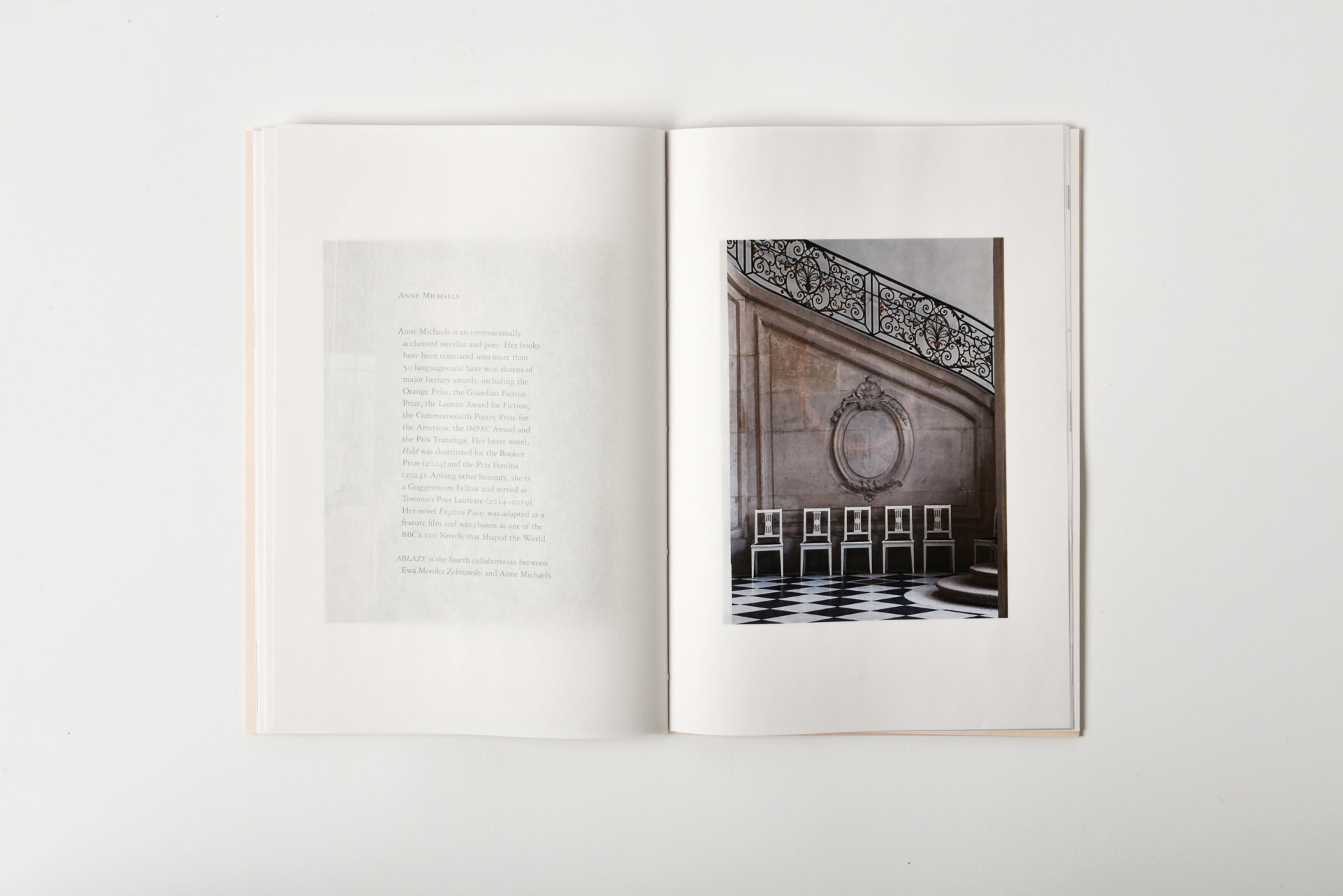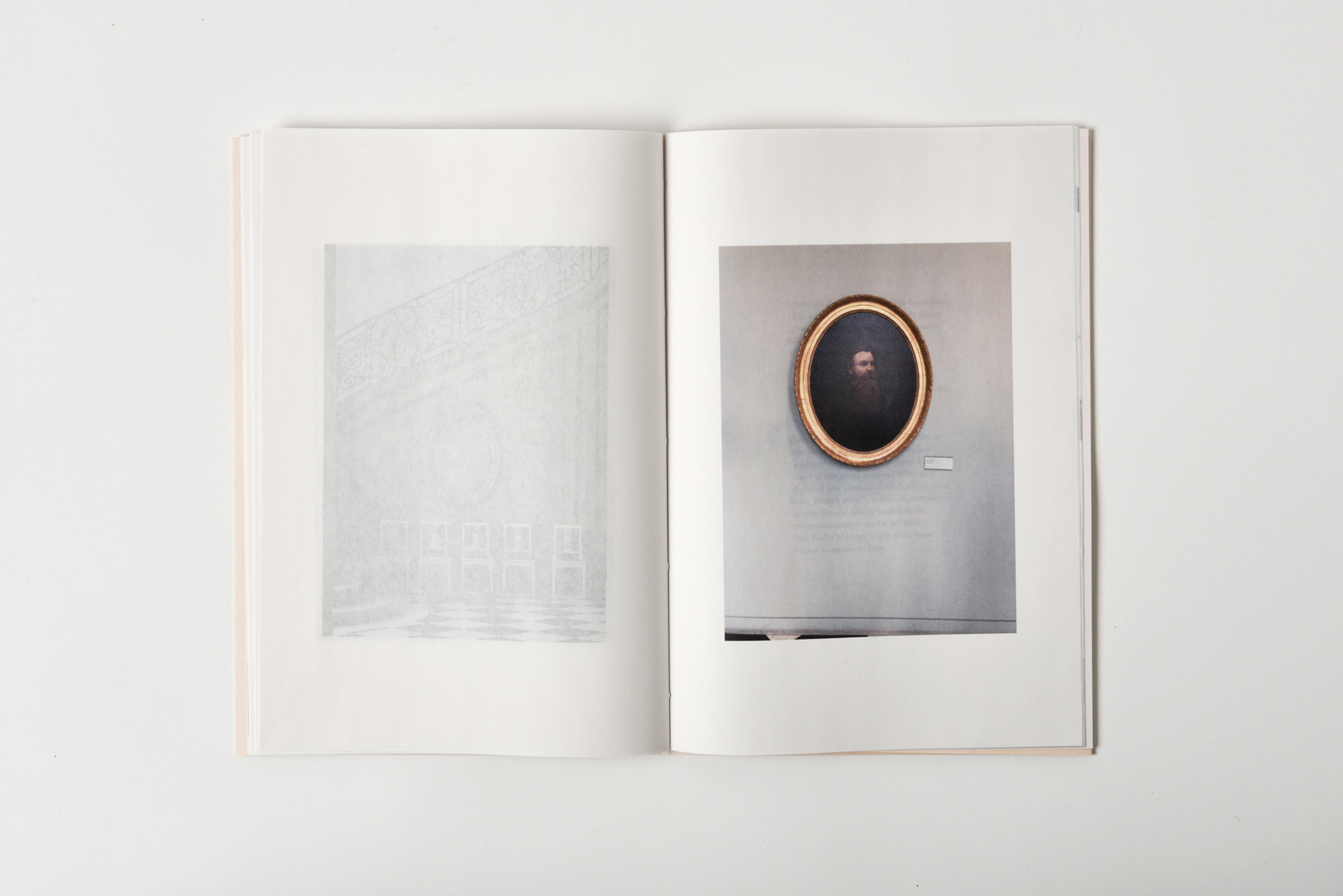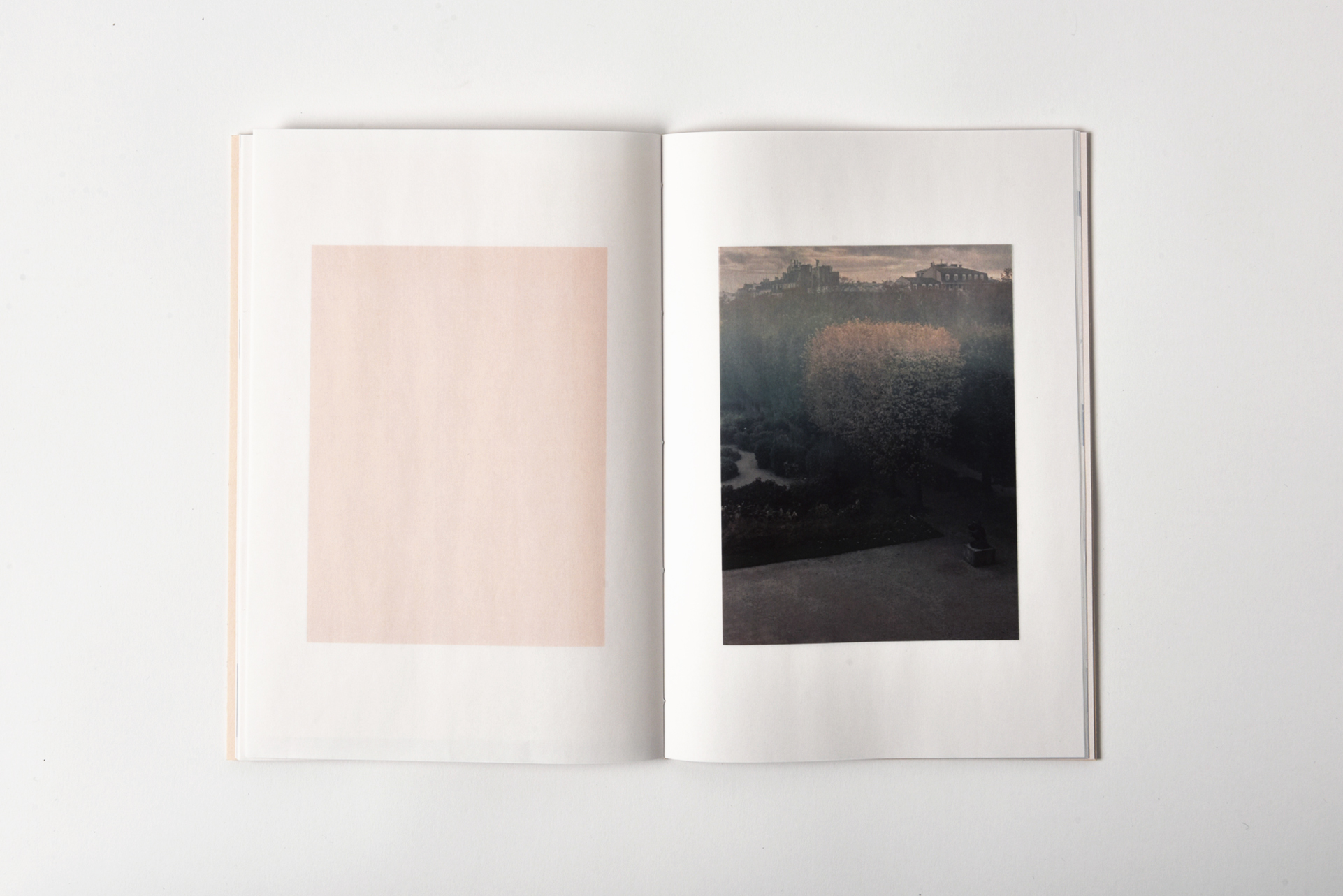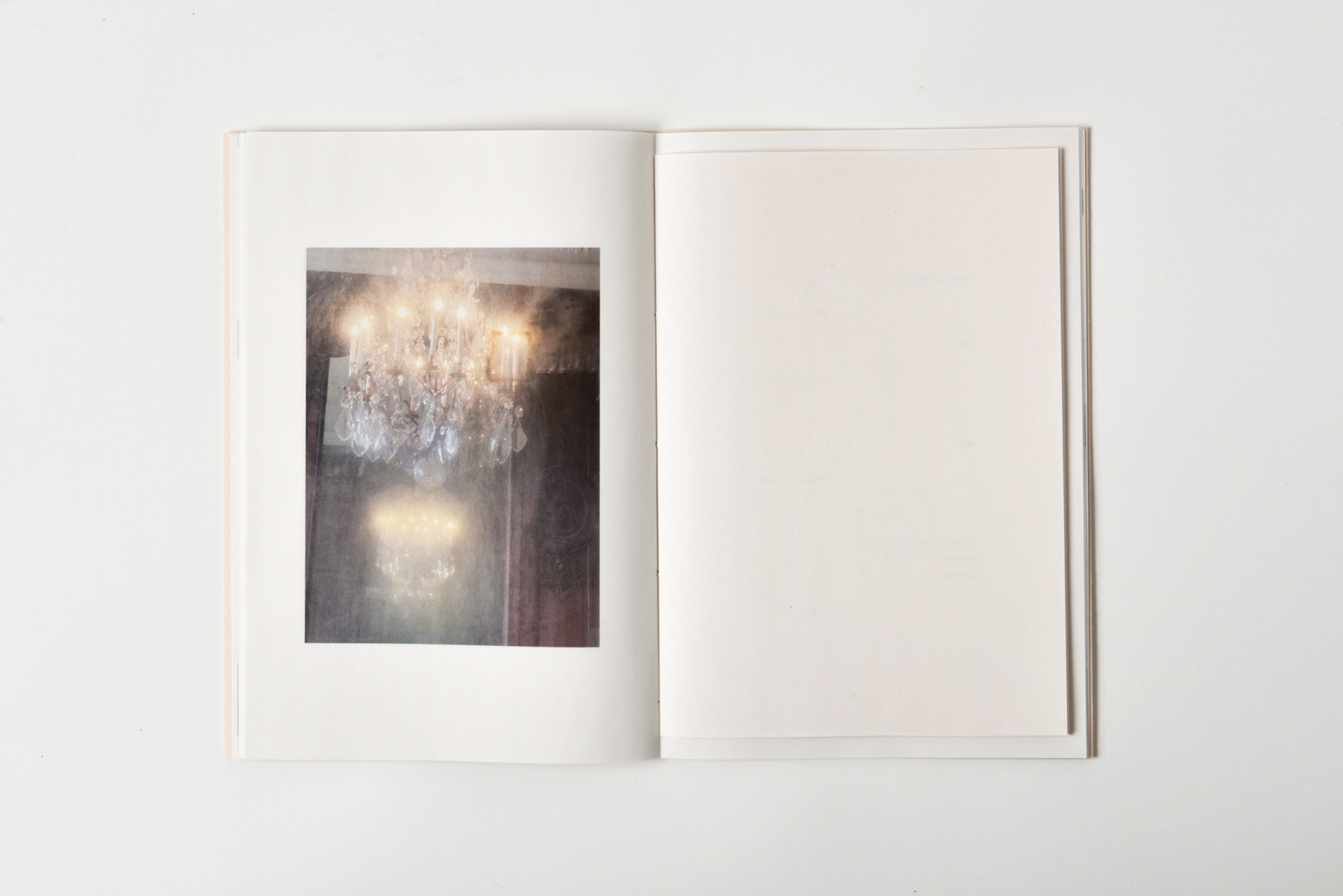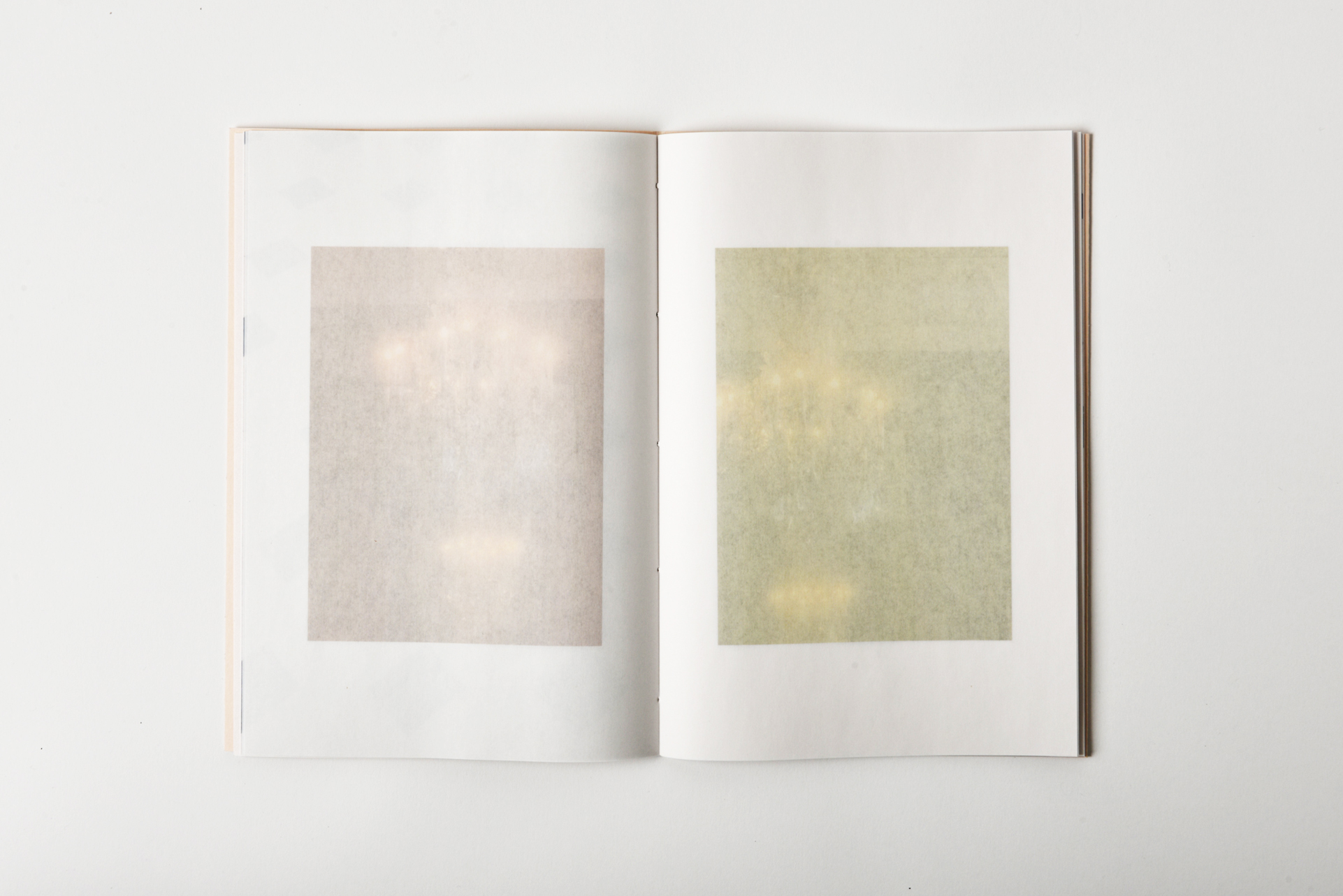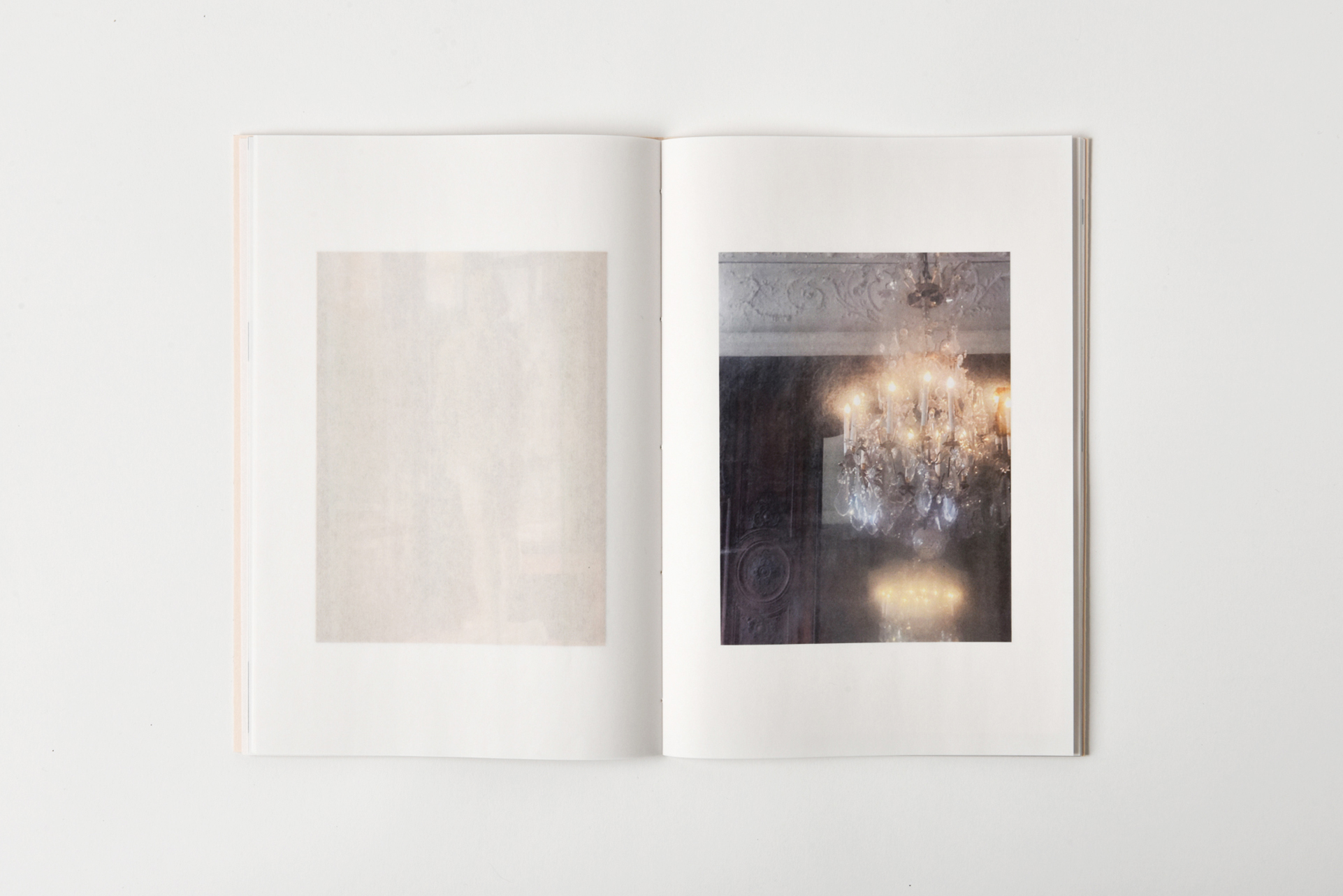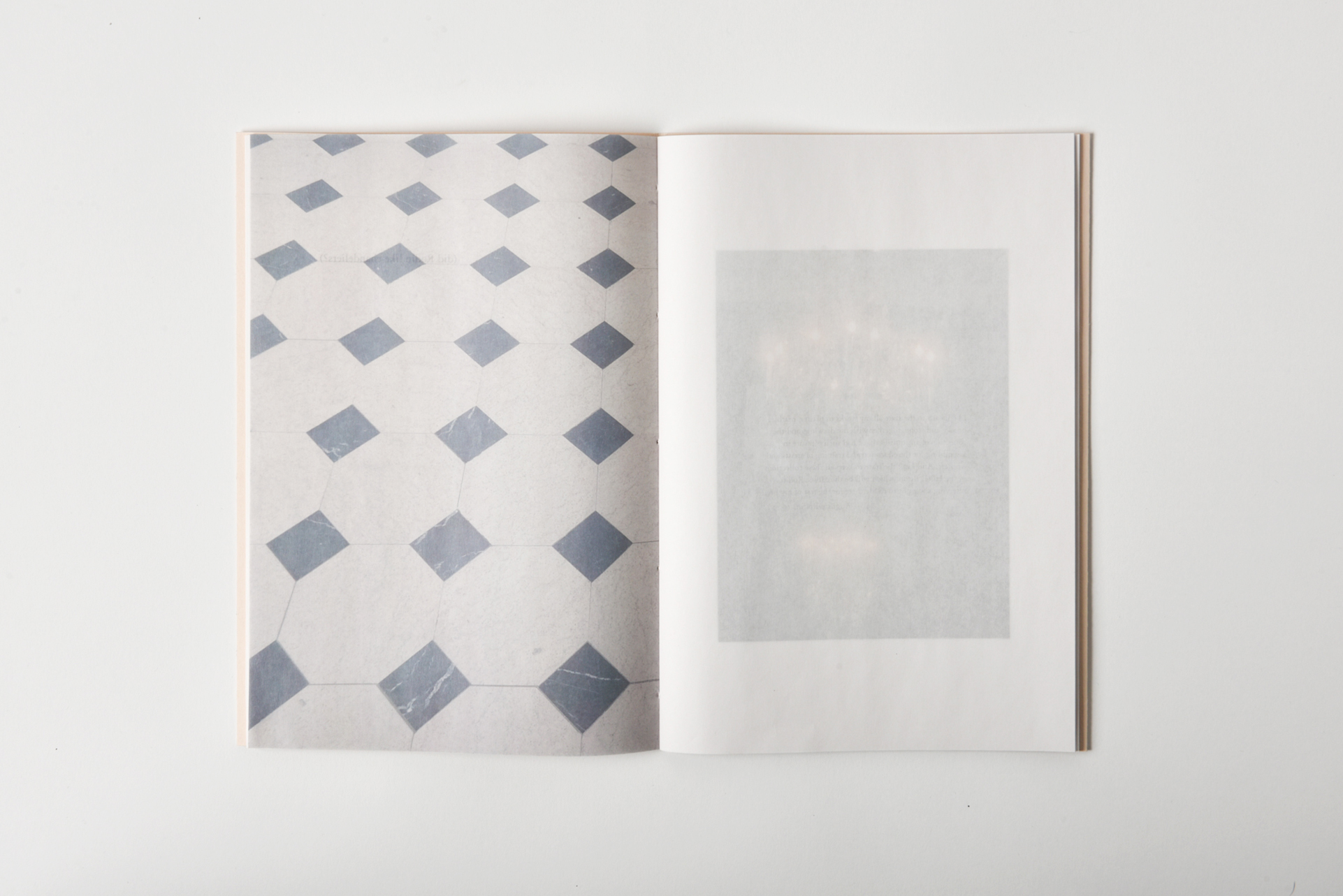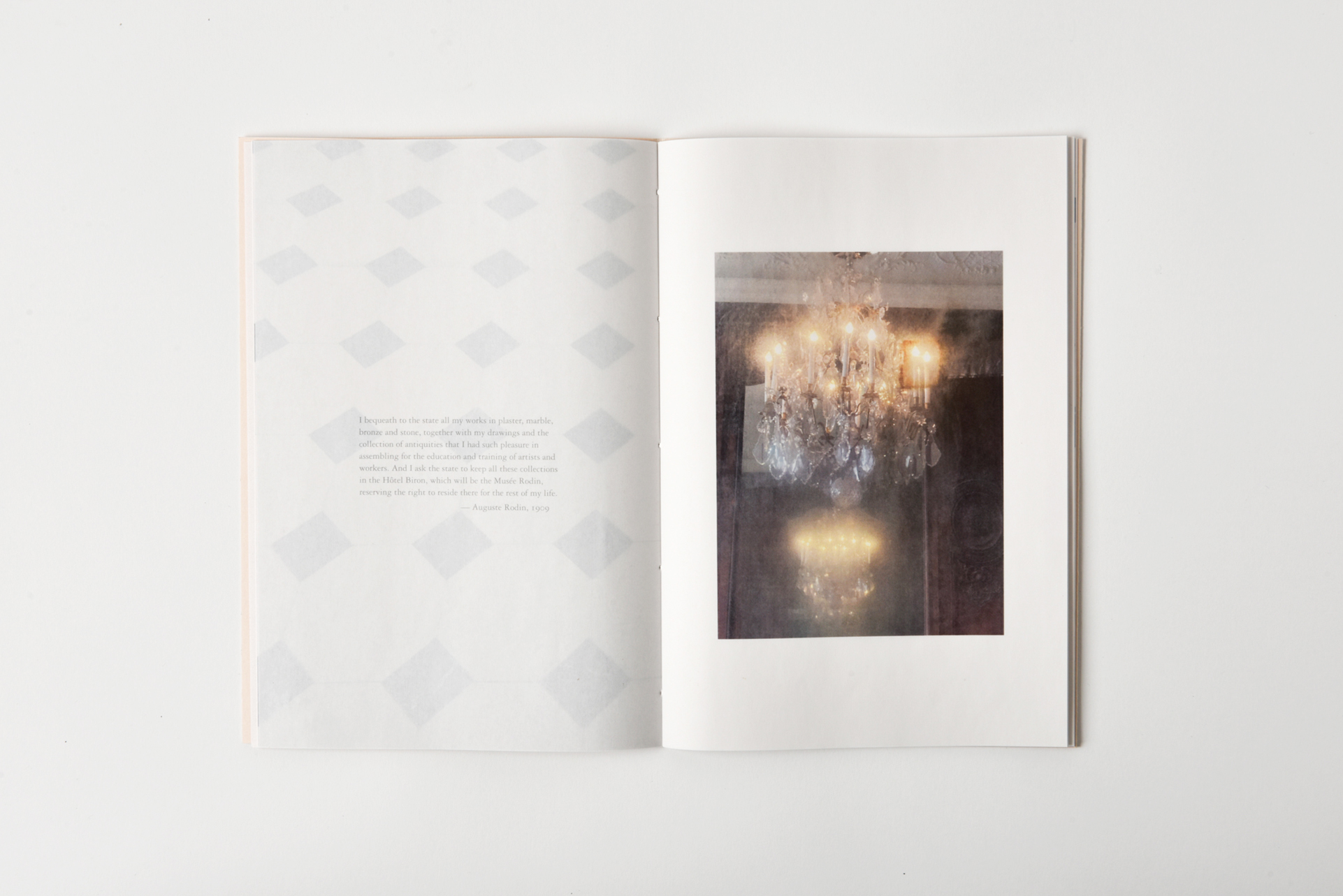[November 12 2025]
By Michel Hardy-Vallée
ABLAZE (did Rodin like chandeliers?), Ewa Monika Zebrowski
How many dimensions are there to a sheet of paper? Because of its thinness, three feels excessive; but two also seems insufficient: how can a book have a third dimension if its pages only have two? Bookworms were likely pioneers of the third dimension, but paper thickness remains a neglected element of book design, unless it is maximized to isolate the content of pages from each other.
Combining photographs taken at Hôtel Biron (the sculptor Auguste Rodin’s last residence and today home to the eponymous museum in Paris) with a poem by Anne Michaels and pages of colour fields, ABLAZE, by Ewa Monika Zebrowski, questions our ways of looking at photobooks by her careful layering of images and materials. This fourth collaboration between Zebrowski and Michaels benefited from the expertise of the Korean press Datz, which printed the book on high-end Xerox machines. Working closely with Zebrowski on all aspects of production, the press put its expertise to the service of her delicate, minimalist vision.
Ambling through the vast and ornate building, Zebrowski pays attention to its foggy mirrors atop marble mantlepieces, its blazing chandeliers, and its geometric tiled floors. Rodin’s sculptures and his painted portrait seem to be the sole inhabitants in what is actually one of the most visited museums in France. Outside, the trees are yellowing in the garden under a pale, cold light, seen through a window veiled by light reflections. This solitary space is propitious to the moment of internal illumination expressed by Michaels in a poem considering ageing bodies: “you make me / think / what is ablaze.” Tiny stars almost punch through the poem’s page, which is bound to the rest of the block by a sewn gilt thread.
This delicate, clever, and moving book is intended to be experienced in the hands. The light-grained toasted-flour–coloured wraps are embossed with the gilt lettering of the title, contrasting with the pages’ thin kraft paper that lets other pages show through, creating visual layers. Show-through, usually considered a printing defect, here allows each page to be designed in relation to both the adjacent and the subsequent one. The precise opacity of the paper lets images and colour fields be blended together, up to a certain depth. In return, the foggy mirrors and windows continue the layering effect pictorially, destabilizing the division of labour between image and substrate. Zebrowski’s margin for error is razor-thin: a few grams more of weight in the paper or a few points of contrast adjustment in the photos would ruin the effect.
Our vernacular theory of vision is mimetic: light enters the camera obscura of the eye, is focused by a lens, and impresses images of the world onto our retina. However, during a recent eye exam, I was reminded that vision is not photography. A blazing flash of light resulted in my seeing not only the expected afterimage but also the exact shape of my retina and its blood vessels floating in space for a few seconds afterward. Mimesis had eaten its own tail: my retina was looking at itself. In fact, the excitation of the nerves by the flash shows that seeing is more like touching light than depiction. By the same token, the pictorial and material layers of ABLAZE do not depict per se, but they conspire to produce a sculptural experience of vision.
Looking outward and inward simultaneously, Zebrowski speaks to a sentiment that will be familiar to those who saw the film L’année dernière à Marienbad (1961), Alain Resnais’s enigmatic deconstruction of selfhood through architecture. Her careful consideration of architecture, decoration, and optics achieves a satisfying kind of inner peace, a dissolution of persona. We become lost among these silent rooms, along these unending corridors, through these salons from another century. Being unable to remember whatever really happened there is the point, until a blazing flash of inner recognition grips us. We are not just mirrors of history gathering events into the photographic album of our memory: veils and blinding lights sculpt us into existence, and we must sometimes feel as if we are made of marble.
Ewa Monika Zebrowski is a photographer and a poet. She has presented forty solo exhibitions and produced more than twenty-five artist’s books since 2001. Her work can be found in over fifty institutional and museum collections in Canada, the United States, and abroad, including MoMA, the Getty Research Institute, and the Menil Collection. www.ewazebrowski.com
Hardy-Vallée is a historian of photography, independent curator, and Visiting Scholar at the Gail and Stephen A. Jarislowsky Institute for Studies in Canadian Art, Concordia University. His research is concerned with photography books, visual narration, interdisciplinary practices, and the archive, in the contexts of Quebec and Canada. He is the author of Premières planches: photos de John Max (VU, 2025).

